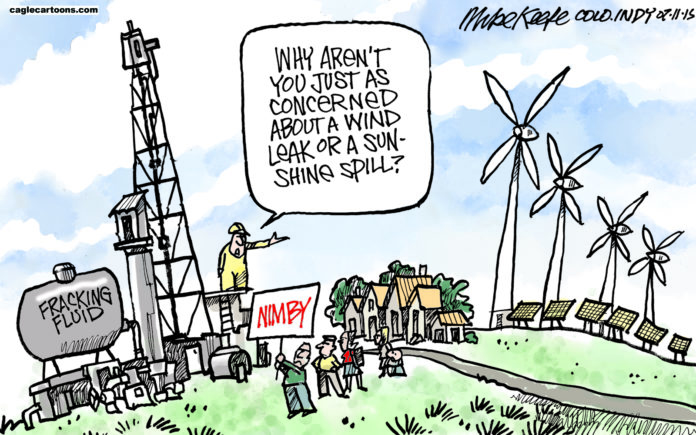BY DAVID PERRYMAN
 Eighty-seven years before the birth of folk singer/songwriter Bob Dylan, Vermonter Daniel Halladay had invented the Halladay Windmill that became an iconic part of the landscape of rural Americana. As Oklahoma’s pioneers settled in the twin territories, they were well aware that the answer to drawing water from the ground for ranching, farming and domestic purposes was blowing in the wind.
Eighty-seven years before the birth of folk singer/songwriter Bob Dylan, Vermonter Daniel Halladay had invented the Halladay Windmill that became an iconic part of the landscape of rural Americana. As Oklahoma’s pioneers settled in the twin territories, they were well aware that the answer to drawing water from the ground for ranching, farming and domestic purposes was blowing in the wind.
Government estimates indicate that at one time more than six million private windmills were active west of the Mississippi in the late 19th and early 20th centuries. Five generations later, most of the rusty windmills that once stood as sentinels across the prairie and pumped cool clean water into livestock tanks have been replaced with electric pumps often powered by solar panels.
Wind energy was occasionally used in homes. Prior to rural electrification, initiated by Franklin D. Roosevelt’s Executive Order No. 7037, my 88-year-old mother recalls her grandparents using a small windmill south of Carnegie to power a radio that was used once each day to listen to “the evening news.”
Cheap oil caused interest in alternative fuels to wane, but in 2008 the U.S. Department of Energy published its “20% Wind Energy by 2030” Initiative and two years later, in May 2010, Gov. Brad Henry signed HB 3028 creating the Oklahoma Energy Security Act and setting our state goal for 15% of our electric production to be from wind, solar or geothermal.
By 2013, Oklahoma’s wind energy industry alone was producing 14.8% of our electricity and today coupled with other renewable resources to produce nearly 18.5% of all Oklahoma electricity. From 2003-14, our state has gone from 10th to fourth in wind energy production and has the potential to produce more than 30 times the state’s current electrical needs.
As many as 2,000 Oklahoma employees are related to the wind energy industry and seven manufacturing facilities in the state produce products for the wind energy industry. Counties, public schools and technology centers have seen a huge increase in their ad valorem tax basis. One rural school saw its tax base valuation increase from $14 million to $43 million due to wind energy.
The “green” effects of wind energy save more than 2.639 billion gallons of precious water per year and is like taking the equivalent of 1.137 million cars off the road. Just as importantly, wind energy produces no earthquakes, groundwater contamination or roadway deterioration.
Currently, the oil and gas industry is subsidized in this state by artificially low gross production taxes, and the wind energy industry is subsidized through a five-year ad valorem tax exemption.
A number of pending bills have the potential to impact wind energy. One requires all tax credits, including wind energy tax credits, to be reviewed. That is a good thing. Another protects property owners and neighbors by making certain that the wind energy company will have resources available to safely remove wind turbines from the properties at the end of their useful life. That, too, is a good thing.
A third bill totally eliminates the wind energy incentive, effective Jan. 1, 2017. Is that a good thing? Maybe, but if so, why wait 20 months and allow hundreds more turbines to be constructed using the incentive. Conversely, if the incentives are beneficial, but simply too lucrative, then why not just decrease the exemption instead of totally eliminating it? Otherwise, we may never know if the answer truly is blowing in the wind.
– David Perryman, a Chickasha Democrat, represents District 56 in the Oklahoma House of Representatives







